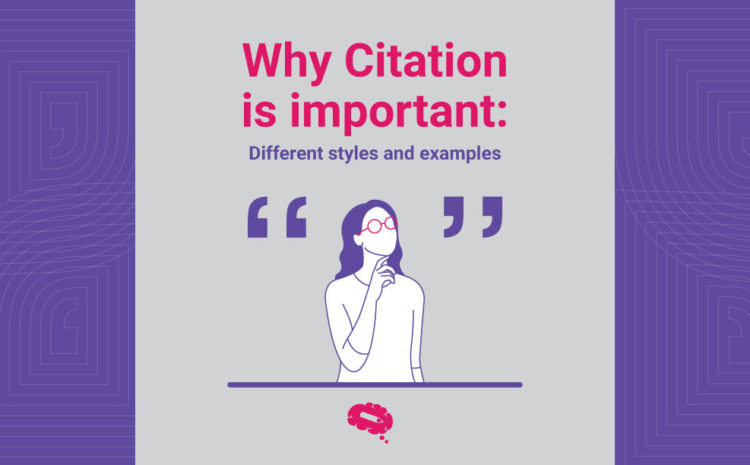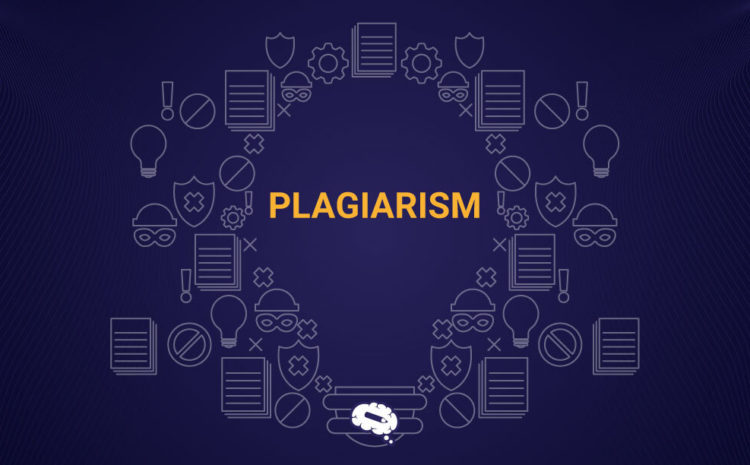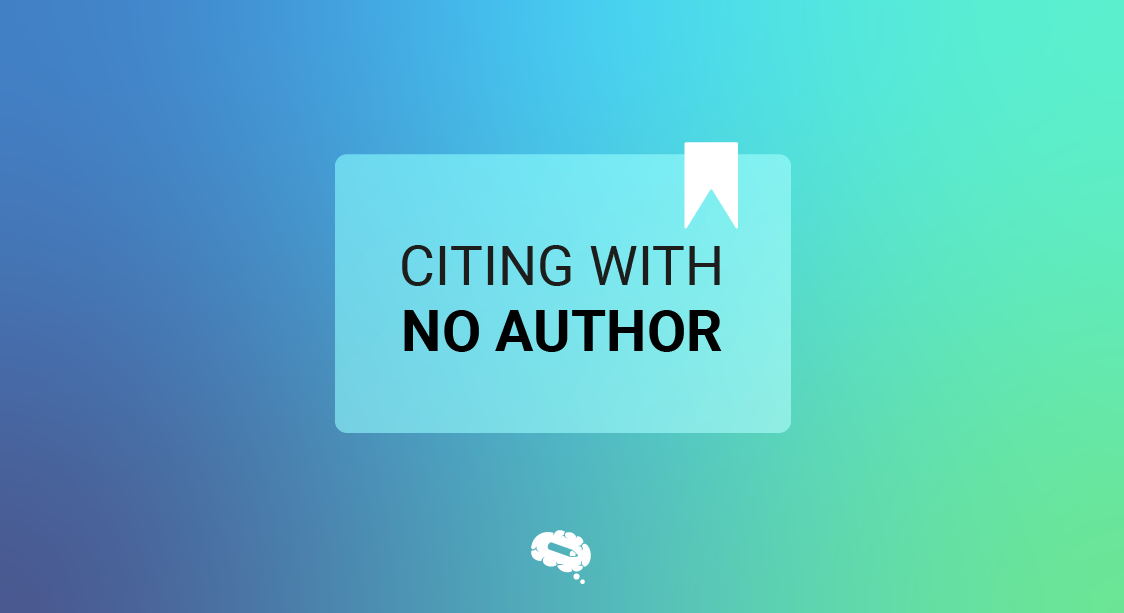Knowing how to cite an image correctly is essential for anyone producing written work, from students to professionals. Citing digital images found on the internet is important to give proper credit and avoid plagiarism. Citing images properly not only gives credit to the original creator but also helps avoid plagiarism, ensuring the integrity of your work. Additionally, it is crucial to properly cite images found on Google Images by referencing the original source rather than ‘Google Images’ itself. Whether you are using images for a research paper, presentation, or blog post, understanding the correct citation format is crucial. In this guide, we will walk you through the steps of how to cite an image, providing clear examples and practical advice. Get ready to master the art of image citation with confidence and ease.
Understanding Image Citation
Importance of Citing Images
Citing images is crucial for several reasons. It is important to acknowledge the image creator’s role in the citation process, rather than citing the search engine where the image is found. Firstly, it acknowledges the original creator’s effort and intellectual property, ensuring they receive appropriate credit. Secondly, correct citation helps you avoid plagiarism, which can have serious academic and professional repercussions. Additionally, providing proper citations enhances the credibility of your work, allowing others to verify the sources of your images. This transparency is particularly important in academic and research settings, where the integrity of your references can significantly impact the reception of your work. Understanding how to cite an image correctly also enriches your own knowledge and appreciation of source material, fostering a respectful and ethical use of resources. Overall, proper image citation is a fundamental practice in maintaining academic honesty and professional integrity.
Common Citation Styles
When learning how to cite an image, it’s important to understand the different citation styles commonly used. The three most prevalent styles are APA (American Psychological Association), MLA (Modern Language Association), and Chicago. Each has its own set of rules and formats.
APA style is often used in the social sciences and includes the author’s name, date, title of the image, and source. MLA style, commonly utilized in the humanities, requires the author, title of the image, title of the container (such as a book or website), and other relevant details like the publisher and date. The title of the image should appear in quotation marks in MLA Works Cited entries for an image found online. Chicago style is versatile, used in various disciplines, and can include footnotes or endnotes with a bibliography entry.
Knowing these styles will help you cite images accurately, depending on the context of your work. Familiarising yourself with the specific requirements of each style ensures that your citations are correct and professional.
Choosing the Right Style
Selecting the appropriate citation style depends on the context and requirements of your work. For academic writing, the choice is often dictated by the discipline. Humanities subjects typically follow the MLA style, while APA is preferred in the social sciences. Chicago style is widely used in history and some sciences.
Consult your institution’s guidelines or seek advice from your instructor to determine the required style. For professional or business documents, follow the style guide that is standard within your industry or organization. If you are writing for a publication, adhere to its specific citation requirements.
Consistency is key. Once you choose a style, apply it uniformly throughout your document. This not only ensures clarity but also maintains the professional appearance of your work. Understanding how to cite an image correctly in the chosen style will lend credibility and reliability to your content.
Citing Images in Academic Work
MLA Style Citation
When using the MLA citation style to cite an image, you need to provide specific details to ensure proper attribution. Start with the creator’s name, followed by the title of the image in italics. If the image is untitled, provide a brief description instead. When citing an online image, it is important to include the title or description, date, URL, and artist name. Next, include the title of the container, such as the book, website, or museum where the image is found. Following this, list the publisher, publication date, and location details, such as the page number or URL.
For example: Smith, John. Sunset Over the Hills. Art in Nature, edited by Jane Doe, Nature Publishing, 2020, p. 45.
If the image is from a website, the citation might look like this: Doe, Jane. Ancient Ruins. Historic Photos, www.historicphotos.com/ancient-ruins. Accessed 12 Oct. 2023.
Using the MLA format correctly will help you present a polished and credible piece of academic work.
APA Citation Style
The APA citation style is commonly used in the social sciences and requires specific elements to cite an image correctly. It is important to include the image’s creator’s name in the citation. Start with the creator’s last name, followed by their initials. Then, provide the publication year in parentheses. The title of the image should be in italics, followed by a description in square brackets, if applicable. Finally, include the source, such as the name of the website or the book, along with the URL or page number.
For example: Smith, J. (2020). Sunset Over the Hills [Photograph]. Nature Publishing. https://www.naturepublishing.com/sunset-over-hills
If the image is part of a larger work, like a book or article, the citation might look like this: Doe, J. (2023). Ancient Ruins [Photograph]. In Historic Photos (p. 45). Nature Publishing.
Following the APA format ensures that your citations are clear and professional, enhancing the credibility of your academic work.
Chicago Citation Style
The Chicago citation style offers flexibility, accommodating both footnotes and endnotes, as well as a bibliography entry for citing images. Begin with the creator’s full name, followed by the title of the image in italics. If the image lacks a title, provide a brief description. Include the date of creation, the type of work, and the source, such as the name of the book, website, or institution.
For a footnote or endnote, the citation might appear as:
1. John Smith, Sunset Over the Hills, 2020, photograph, Nature Publishing, https://www.naturepublishing.com/sunset-over-hills.
In the bibliography, it would look like this:
Smith, John. Sunset Over the Hills. 2020. Photograph. Nature Publishing. https://www.naturepublishing.com/sunset-over-hills.
For images in a book:
Doe, Jane. Ancient Ruins. 2023. Photograph. In Historic Photos, 45. Nature Publishing.
Using the Chicago style correctly ensures thorough and accurate documentation, enhancing the scholarly quality of your work.
Citing Images for Online Content
Blog Posts and Articles
When citing images for blog posts and articles, it’s important to follow best practices that ensure proper credit and legality. Start with the creator’s name and a hyperlink to their original work, if available. If the image is from a stock photo site or a Creative Commons source, include the site’s name and a link to the image. Mention the type of license, if relevant, to inform readers about usage rights.
For example:
Photo by John Smith on Unsplash
Or:
Image by Jane Doe, Creative Commons
If the image is your own, simply note that it’s your work:
Image © [Your Name]
Citing images accurately in your blog posts and articles not only respects the creator’s rights but also enhances your content’s credibility. Proper attribution helps build trust with your audience and maintains ethical standards in online publishing.
Social Media Platforms
Citing images on social media platforms can be straightforward yet crucial for maintaining ethical standards. Always include the creator’s handle or profile name along with a direct mention if possible. If the platform supports clickable links, provide a link to the original source or the creator’s profile. This practice not only credits the original creator but also encourages engagement and authenticity.
For example, on Twitter or Instagram:
Photo by @JohnSmith via Unsplash
On Facebook, you might write:
Image by Jane Doe from Creative Commons: [Link to Image]
If you’re sharing your own work, a simple attribution like:
Photo © [Your Name]
is sufficient. Proper citation on social media builds trust with your audience and demonstrates respect for intellectual property. It also helps creators gain visibility and recognition, fostering a supportive and credible online community.
Websites and Webpages
When citing images on websites and webpages, it’s essential to provide clear and accessible credit to the original creators. Begin with the creator’s name, followed by the title of the image, if available. Include a hyperlink to the original source or the creator’s profile. If the image is licensed, mention the type of license and link to it for transparency.
For example:
Photo by John Smith, Sunset Over the Hills, available on Unsplash, under Unsplash Licence.
For Creative Commons images, you might write:
Image by Jane Doe via Creative Commons.
If you are citing your own image, use:
Image © [Your Name]
This approach not only respects the creator’s intellectual property but also enhances the credibility of your website. Proper citation ensures that you are legally compliant and ethically transparent, fostering trust with your audience and supporting the wider creative community.
Tools and Resources for Citing Images
Online Citation Generators
Online citation generators can be invaluable tools when learning how to cite an image correctly. These tools simplify the citation process by automatically formatting the necessary details according to various styles, such as APA, MLA, and Chicago. You typically input the creator’s name, title of the image, source, and other relevant information, and the generator produces a properly formatted citation.
Popular online citation generators include:
- Citation Machine: Offers a user-friendly interface and supports multiple citation styles.
- EasyBib: Known for its comprehensive database and ease of use.
- BibMe: Provides a quick and efficient way to generate citations, with options to save and export your citations.
These tools save time and reduce the likelihood of errors, ensuring that your citations are accurate and professional. While they are convenient, always double-check the generated citation to confirm it meets the guidelines of your specific citation style.
Style Guides and Manuals
Style guides and manuals are essential resources for correctly citing images. These guides provide detailed instructions on how to format citations according to different styles such as APA, MLA, and Chicago. They offer comprehensive examples and clarify specific rules, ensuring your citations are accurate and consistent.
Notable style guides include:
- The Publication Manual of the American Psychological Association (APA): Widely used in social sciences, it covers the APA citation style in detail.
- The MLA Handbook: Essential for humanities disciplines, this guide explains the MLA citation format.
- The Chicago Manual of Style: Known for its thoroughness, it offers guidelines for both the notes and bibliography system and the author-date system.
Utilizing these guides ensures that you adhere to the correct format and style. They also provide answers to more complex citation questions, making them invaluable for thorough and professional academic work. Always keep a copy of the relevant style guide handy for reference.
University and Library Resources
University and library resources are invaluable for mastering how to cite an image correctly. Many academic institutions offer access to comprehensive citation guides and templates tailored to various citation styles. University libraries often provide workshops, one-on-one consultations, and online tutorials to help students and researchers with citation queries.
Most universities have dedicated web pages with resources on proper citation practices, including examples and step-by-step guides. Libraries frequently subscribe to citation management tools like EndNote, Zotero, and Mendeley, which can help you organize and format your references efficiently.
Additionally, librarians are excellent resources; they can offer personalized advice and guidance on complex citation issues. By utilizing these resources, you not only ensure your citations are correct but also enhance the overall quality and credibility of your academic work. Always check your university’s library website for available resources and support services.
Best Practices for Image Citation
Ethical Considerations
Ethical considerations are paramount when citing images. Proper attribution respects the intellectual property rights of creators and acknowledges their work. Failing to cite images correctly can result in plagiarism, which damages your credibility and can have serious academic or legal consequences.
Always seek permission if you intend to use an image not covered by a free licence or fair use, especially in commercial contexts. Understanding the license terms is crucial—some images may require attribution, while others might have restrictions on modification or commercial use.
Transparency is key. Clearly indicate the source of every image, including your own, to maintain honesty and integrity in your work. This practice not only respects creators but also informs your audience about the origins of your visuals, fostering trust and reliability.
By adhering to ethical standards, you contribute to a culture of respect and fairness in the academic and professional communities.
Avoiding Plagiarism
Avoiding plagiarism is a fundamental aspect of image citation. Plagiarism occurs when you use someone else’s work without giving proper credit, which is both unethical and, in many cases, illegal. To prevent plagiarism, always cite the source of any image you use, regardless of whether it is from a book, website, or another medium.
Ensure that your citations are complete and accurate, following the appropriate style guide for your work. If an image is licensed, include the license details to inform others about how the image can be used.
When in doubt, err on the side of caution and provide a citation. Even images that seem to be in the public domain or are freely available online often have usage terms that require attribution. Using citation management tools and resources can help you stay organized and ensure that all sources are properly credited.
By diligently citing images, you uphold the integrity of your work and show respect for the intellectual property of others.
Consistency in Citation Styles
Consistency in citation styles is essential for creating a professional and readable document. Once you select a citation style, such as APA, MLA, or Chicago, apply it uniformly throughout your work. Inconsistent citations can confuse readers and detract from the credibility of your document.
Adhering to a single citation style simplifies the reading process, allowing your audience to easily follow your references. It also demonstrates your attention to detail and commitment to academic or professional standards. Use style guides or citation management tools to ensure that every citation fits the chosen format.
Review your citations carefully to check for uniformity in punctuation, capitalization, and order of information. If you collaborate with others on a project, agree on a single citation style from the outset to maintain consistency.
By maintaining a consistent citation style, you enhance the clarity and professionalism of your work, making it more reliable and trustworthy for your audience.
Elevate Your Research with Mind the Graph
Mind the Graph revolutionizes how scientists and researchers present their findings by providing an easy-to-use platform for creating stunning and precise scientific illustrations. Our extensive library of templates and customizable graphics ensures that you can effortlessly transform complex data into clear, impactful visuals. Perfect for presentations, posters, and research papers, Mind the Graph enables you to communicate your discoveries effectively and engage your audience like never before. Experience the power of professional-quality illustrations and elevate your research – sign up for free today and start creating!

Subscribe to our newsletter
Exclusive high quality content about effective visual
communication in science.





